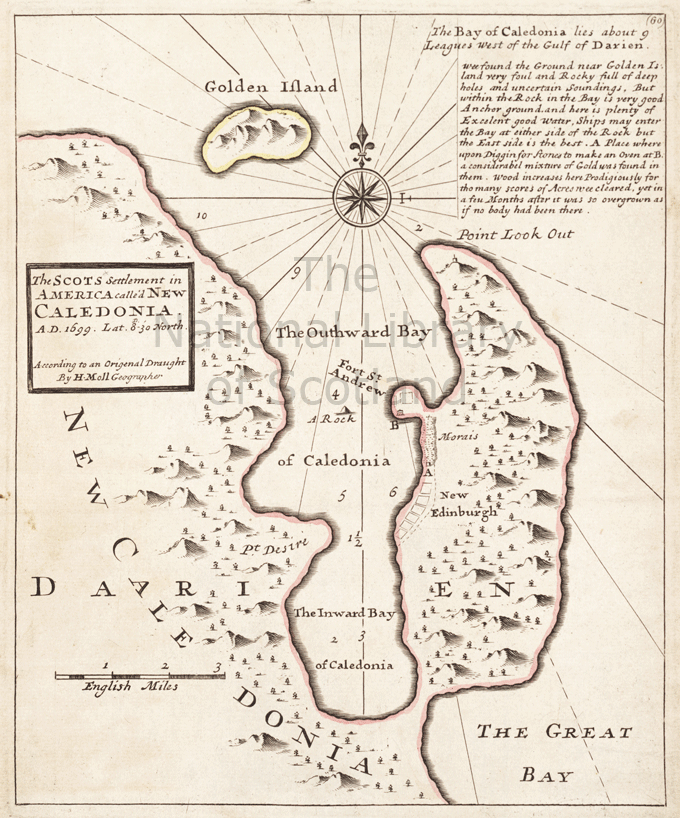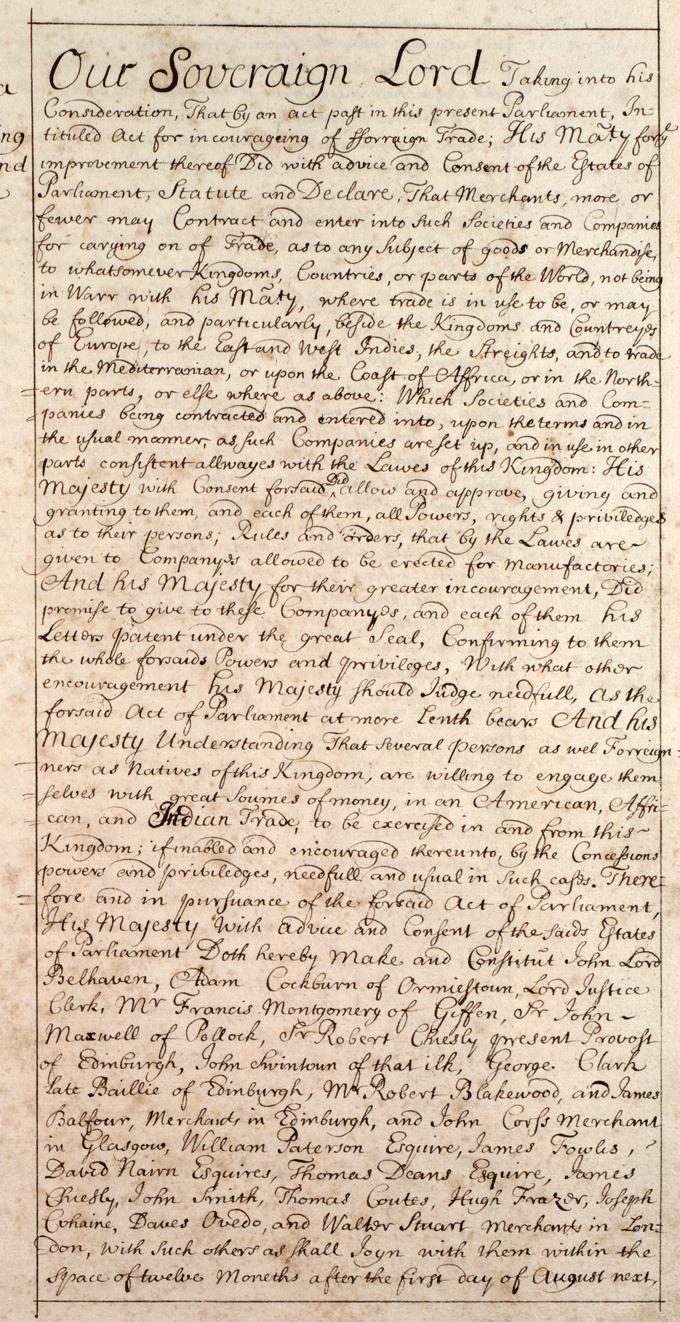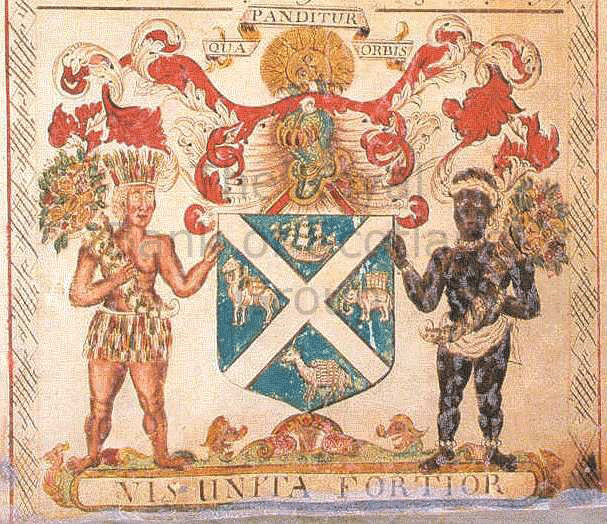| | Home | Resources | Schools Programme | Teachers | Site help | About us | Contact us | |
| You are here: Home > Resources >The Union of 1707 > Scotland 1689 - 1707 |
The Darien SchemeScotland’s economy in the late 18th century was in a very poor way. Scottish merchants wanted new markets for their goods, but were excluded from trading with English colonies by the Navigation Acts. In 1695 the Scottish Parliament set up The Company of Scotland trading to Africa and the Indies to give Scotland a share in the rich colonial trade. The suggestion came from William Paterson, a Scottish merchant who had worked in the West Indies before settling in London and who, in 1694, had been involved in the foundation of the Bank of England. Paterson recommended planting a colony in Darien on the isthmus of Panama, where Central and South America join. Here they would trade with both east and west. Cargoes would be transferred over the isthmus, saving ships the long and dangerous journey round Cape Horn. 
An extract of The Scots Settlement in America called New Caledonia A.D. 1699, according to an original draught by H. Moll. Published in Herman Moll's Atlas Minor, 1736. Reproduced by kind permission of the National Library of Scotland. |
||||
Setting up the Company of Scotland, 1695An Act of Parliament was passed on 26 June 1695 to set up the Company of Scotland Trading to Africa and the Indies. The Act gave the Company very wide powers: the right to establish and defend colonies, a monopoly on trade between Scotland and Asia, Africa and America for 31 years and freedom from customs duty for 21 years. Scots saw the project as a patriotic venture and flocked to invest, raising over £400,000 themselves. This extract is taken from the official Acts of the Scottish Parliament. …by an Act past in this present Parliament, Intituled Act for incourageing of fforraign Trade; His Majesty… Did with advice and Consent of the Estates of Parliament, Statute and Declare, That Merchants… may Contract and enter into such Societies and Companies for carying on of Trade, as to any subject of goods or merchandise, to whatsomever Kingdoms, Countries or parts of the World, not being in Warr with his Majesty, where trade is in use to be, or may be followed, and particularly beside the Kingdoms and Countreyes of Europe, to the East and West Indies, the Streights, and to trade in the Mediterranian, or upon the coast of Affrica, or in the Northern parts… 
(National Records of Scotland, Acts of Parliament, PA2/36, f.28. APS ix, 377) |
||||
The Company of Scotland Coat of ArmsThe coat of arms contains a rising sun to symbolise Scotland’s improving prospects. The motto Qua panditur orbis vis unita fortior means Where the world expands its united strength is stronger. The shield is made up of the saltire, with a ship, an elephant, a llama and a camel. The two supporters are an Indian and an African carrying horns of plenty to represent abundance. 

The image of the Company of Scotland Coat of Arms is reproduced by kind permission of the Royal Bank of Scotland Group © 2014. | ||||
|
|